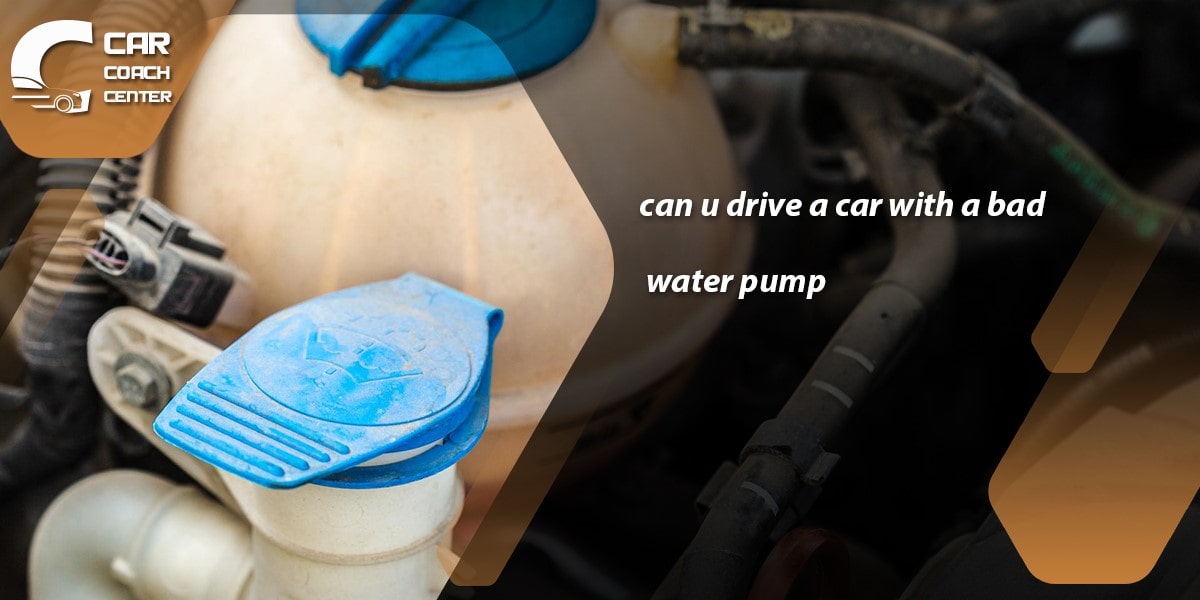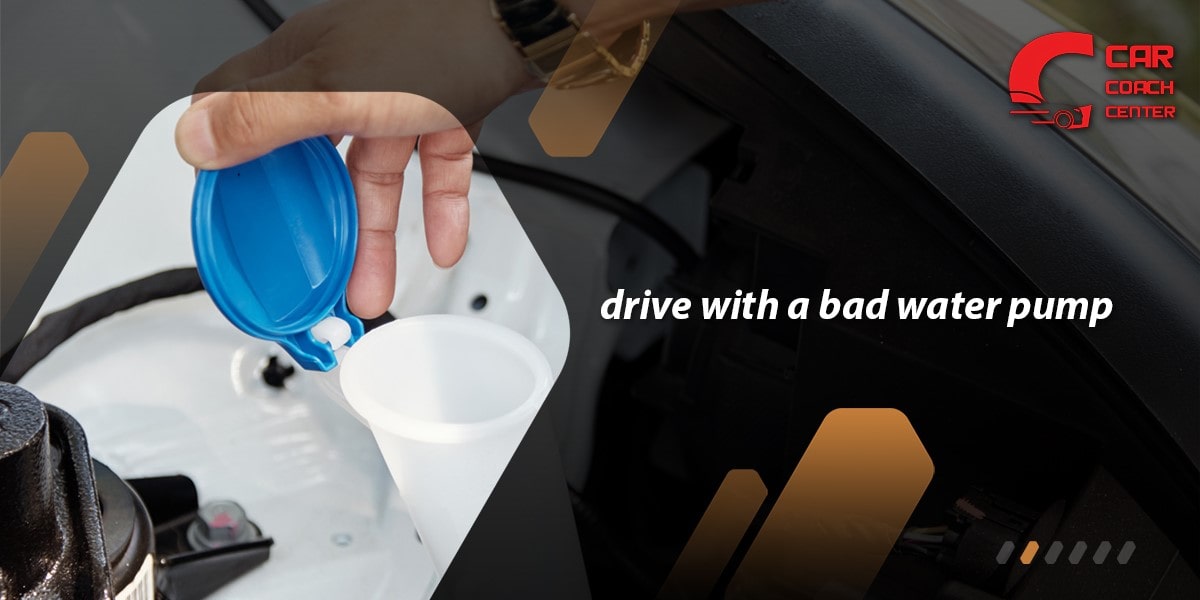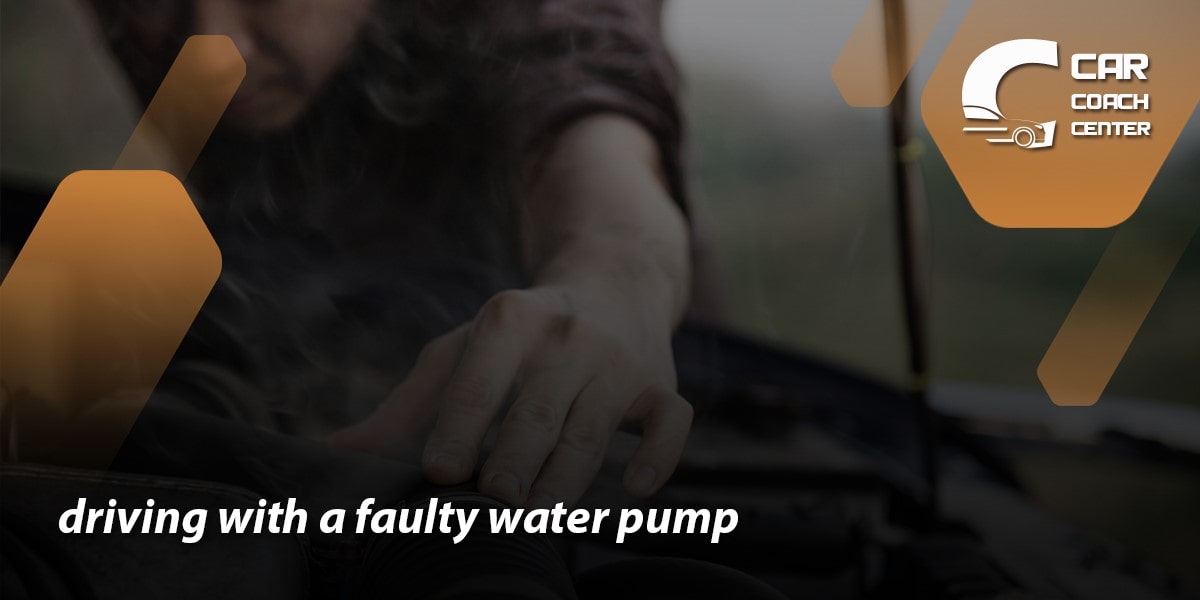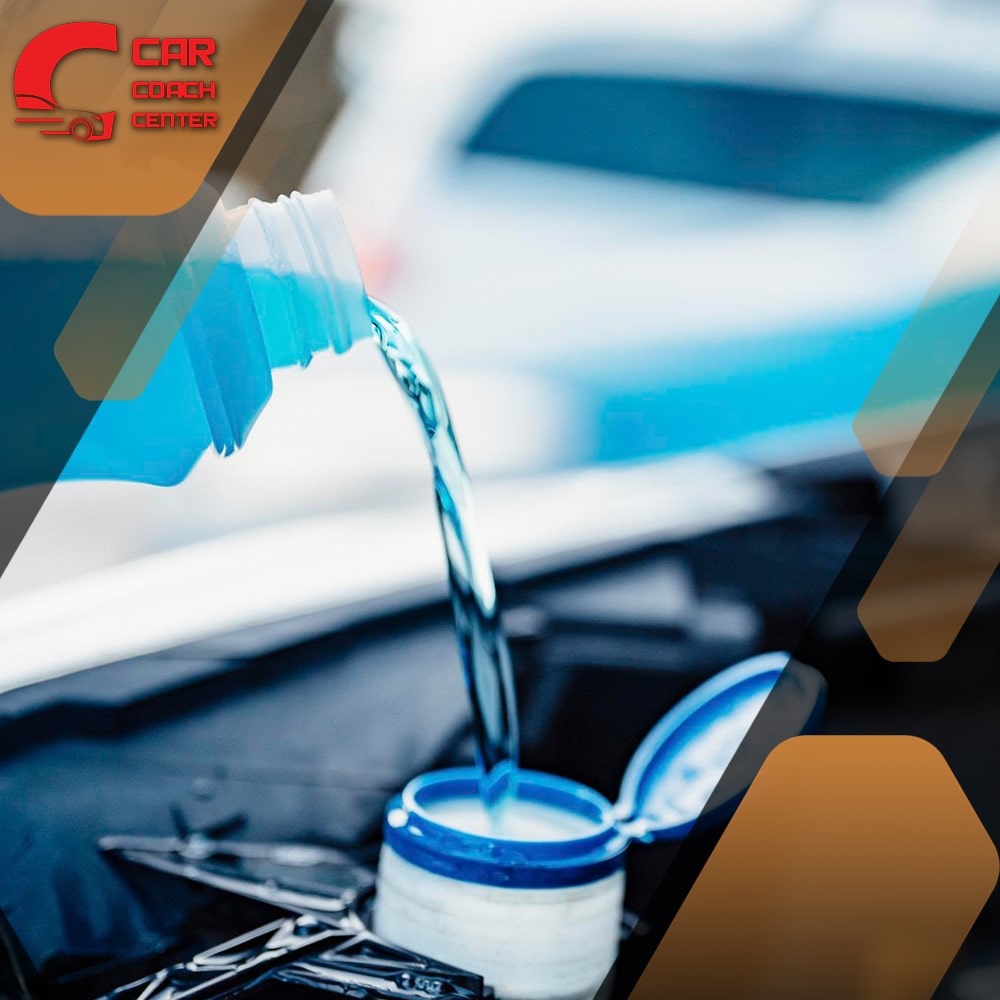Can You Drive A Car With A Bad Water Pump
Can you drive with a bad water pump? This question often arises when faced with a malfunctioning water pump in your vehicle. The water pump plays a critical role in a car’s cooling system, ensuring the engine stays within its optimal temperature range. A faulty water pump can lead to overheating, engine damage, and potential breakdowns, leaving drivers wondering about the feasibility of continuing their journey.
This article will delve into the intricacies of driving with a bad water pump, examining the risks, warning signs, and potential consequences of neglecting this vital component. We will also explore emergency measures if faced with a failing water pump while on the road.

Furthermore, we will discuss preventive maintenance practices to extend the lifespan of your water pump, as well as the options for replacing it, whether through DIY methods or professional service. So, please fasten your seat belts as we navigate through the essential information you need to know about driving with a bad water pump.
The Water Pump’s Vital Role: Why It Matters for Your Vehicle
Can you drive with a bad water pump? To answer that question, it’s crucial to understand the water pump’s vital role in your vehicle’s overall functioning. The water pump is an integral component of the car’s cooling system, circulating coolant throughout the engine. Its primary purpose is to regulate the engine’s temperature, ensuring it stays within a safe and optimal range.
A properly functioning water pump helps dissipate the excess heat the engine generates during its operation. By constantly circulating coolant through the engine block and cylinder heads, the water pump facilitates heat transfer from the engine to the radiator, dissipating it into the surrounding air. This continuous cooling process prevents the engine from overheating, which can lead to severe damage and engine failure.
If you drive with a bad water pump, the consequences can be detrimental. The engine temperature can quickly rise without proper coolant circulation, potentially causing overheating. Overheating can result in warped cylinder heads, damaged head gaskets, or even a cracked engine block. These issues can be expensive to repair and may render your vehicle inoperable until the necessary repairs are made.
Additionally, driving with a bad water pump can compromise engine performance. The engine may operate inefficiently, leading to reduced power, increased fuel consumption, and potential breakdowns. Ignoring the warning signs of a failing water pump and continuing to drive with it can have long-term consequences, affecting your vehicle’s overall health and lifespan.
How to Spot a Failing Water Pump
Can you drive with a bad water pump? Identifying the warning signs of a failing water pump is crucial to determine whether it is safe to continue driving your vehicle. Recognizing these signs early on can help you avoid potential engine damage and breakdowns. Here are some key indicators that your water pump may be failing:
Coolant Leaks
One of the most common signs of a bad water pump is the presence of coolant leaks. If you notice puddles of coolant under your car, especially near the front or center, it could indicate a leaking water pump. Coolant may also be visible on engine components or the ground after parking your vehicle.
Engine Overheating
A failing water pump can disrupt the proper circulation of coolant, leading to engine overheating. Suppose your temperature gauge consistently shows higher-than-normal readings, or you observe steam or smoke coming from the engine compartment. In that case, it indicates that your water pump may be compromised.

Whining or Grinding Noises
Pay attention to any unusual noises coming from the front of your engine. A failing water pump often produces whining or grinding sounds. Worn-out bearings or impellers may cause these noises within the water pump assembly.
Coolant Warning Light
Modern vehicles have coolant warning lights or temperature warning indicators on the dashboard. If you see the coolant warning light illuminate or the temperature gauge rapidly rise into the red zone, it suggests a potential problem with the water pump or cooling system.
Steamy Smells or Engine Smokes
A faulty water pump can cause coolant to leak onto hot engine components, resulting in steamy smells or smoke. If you notice a sweet or burning odor coming from the engine bay, it’s important to investigate the cause, as it could be related to a failing water pump.
Low Coolant Levels
Regularly check your vehicle’s coolant levels. If the coolant levels are consistently low despite refilling, it could indicate a leak caused by a malfunctioning water pump.
Driving with a Faulty Water Pump: Risks and Consequences
Can you drive with a bad water pump? While it may be tempting to continue driving your vehicle with a faulty water pump, doing so can pose significant risks and lead to severe consequences. Ignoring a bad water pump can result in various issues that impact both your vehicle’s performance and safety. Here are the risks and consequences associated with driving with a faulty water pump:
Engine Overheating
The primary role of the water pump is to circulate coolant throughout the engine, regulating its temperature. A malfunctioning water pump hampers this process, leading to inadequate cooling and an increased risk of engine overheating. Overheating can cause significant damage to engine components, such as warped cylinder heads, blown head gaskets, or even a cracked engine block.
Reduced Engine Performance
A bad water pump can disrupt the engine’s proper functioning. As the engine temperature rises due to inadequate cooling, its performance may decline. You may experience reduced power, sluggish acceleration, or an overall decrease in fuel efficiency. Continued driving with a compromised water pump can further exacerbate these issues and potentially lead to engine failure.

Potential Breakdowns
A failing water pump increases the likelihood of unexpected breakdowns. If the pump fails while driving, the engine can quickly overheat, resulting in a sudden loss of power and potential engine damage. This can leave you stranded on the road and require costly repairs or towing services.
Expensive Repairs
Ignoring a bad water pump can lead to more extensive engine damage, resulting in costly repairs. Engine repairs or replacements due to a failed water pump can be significantly more expensive than addressing the issue early. It is important to remember that regular maintenance and timely repairs can help avoid these costly consequences.
Safety Risks
Driving with a malfunctioning water pump increases safety risks for both you and other road users. An overheated engine can suddenly fail, leading to loss of control and potentially causing accidents. Additionally, a vehicle stranded on the side of the road due to a failed water pump can be a hazard to traffic flow and increase the risk of collisions.
Emergency Measures: What to Do When Your Water Pump Fails
Can you drive with a bad water pump? When faced with a failed water pump while on the road, it’s important to take immediate action to prevent further damage to your vehicle. Here are some essential emergency measures to consider when your water pump fails:
Pull Over Safely
If you notice signs of a failed water pump, such as engine overheating or steam, it’s crucial to pull over to a safe location as soon as possible. Find a spot away from traffic to park your vehicle and turn off the engine.
Allow Engine to Cool
After parking, give the engine sufficient time to cool down before attempting any further actions. This will help prevent injuries and potential burns caused by hot engine components.
Do Not Attempt to Remove Radiator Cap
Opening the radiator cap while the engine is hot can release scalding hot coolant and cause severe burns. It is important to exercise caution and wait until the engine has cooled down before attempting to remove the cap.
Check Coolant Levels
Check the coolant levels in the radiator and coolant reservoir once the engine has cooled. Topping up with coolant can help temporarily maintain engine temperature and prevent further overheating if the levels are low. Use caution while handling coolant, as it may be hot.
Seek Professional Assistance
Driving with a failed water pump is not recommended, as it can lead to severe engine damage. Contacting a towing service or roadside assistance to transport your vehicle to a trusted mechanic or repair shop for further diagnosis and repairs is best. They will have the expertise to properly address the water pump issue and ensure the safe operation of your vehicle.
Avoid DIY Repairs on the Road
Attempting to repair or replace a water pump yourself while on the road is not advisable. It requires specialized tools and expertise. It’s best to leave such repairs to professionals who can accurately diagnose the problem and perform the necessary repairs or replacements in a controlled environment.

Preventive Maintenance: Extending the Lifespan of Your Water Pump
Can you drive with a bad water pump? Implementing preventive maintenance measures is crucial to avoid finding yourself in this predicament. Taking proactive steps to maintain your water pump can significantly extend its lifespan and help prevent potential failures. Here are some key practices to consider:
Regular Inspections
Perform periodic visual inspections of your water pump. Check for any signs of leaks, such as coolant puddles or stains near the pump housing. Look for abnormal wear, corrosion, or damage to the pump and its components. Identifying issues early allows for timely repairs or replacement, preventing further damage.
Coolant Flushes
Follow the manufacturer’s recommended coolant flushes and change intervals. Over time, coolant can break down, leading to corrosion and deposits that can clog the water pump and cooling system. Flushing the coolant system and replacing it with fresh coolant helps maintain proper functionality and prevents the accumulation of harmful debris.
Tension Belt Replacement
Many water pumps are driven by a tension belt. If your vehicle has a belt-driven water pump, regularly inspect the belt for signs of wear, cracking, or stretching. Replace the tension belt according to the manufacturer’s recommended intervals or if any signs of damage are evident. A worn-out belt can cause the water pump to function inefficiently or fail altogether.
Proper Coolant Level Maintenance
Keep an eye on your vehicle’s coolant levels. Ensure the coolant reservoir is filled to the recommended level and maintain a proper mixture of coolant and distilled water as specified in your vehicle’s manual. Insufficient coolant can lead to overheating and unnecessary strain on the water pump.
Addressing Coolant Leaks Promptly
If you notice coolant leaks, promptly address the issue to prevent further damage to the water pump and cooling system. Coolant leaks can indicate a failing gasket, seal, or cracked water pump housing. Timely repairs can help avoid costly repairs or premature water pump failure.
Professional Maintenance
Consider having regular professional inspections of your vehicle’s cooling system, including the water pump. Professional mechanics have the expertise and tools to diagnose potential issues and perform necessary maintenance or repairs. Regular maintenance appointments can help identify and address water pump problems before they escalate.
Replacing a Water Pump: DIY or Professional Service?
Can you drive with a bad water pump? If you’ve determined that your water pump needs replacement, the next decision to make is whether to tackle the job yourself or seek professional service. Replacing a water pump can be a complex task, and the choice between DIY and professional assistance depends on several factors. Let’s explore both options:
DIY Replacement
If you have good mechanical knowledge, access to necessary tools, and prior experience working on automotive repairs, consider replacing the water pump yourself. However, keep in mind the following considerations:
Technical Expertise
Replacing a water pump requires a sound understanding of the cooling system, including disassembling and reassembling various components. It involves working with coolant, gaskets, seals, and potentially timing belts or other related parts. Ensure you have the required knowledge and confidence to execute the job correctly.
Tools and Equipment
DIY water pump replacement requires specific tools and equipment, such as a torque wrench, socket sets, sealant, and potentially a pulley removal tool. Please verify that you have the necessary tools or can acquire them before starting the project.
Time and Patience
Water pump replacement can be time-consuming, especially for those attempting it for the first time. It is essential to allocate sufficient time and exercise patience to avoid mistakes and ensure proper installation.
Professional Service
Seeking professional assistance for water pump replacement offers several advantages:
Expertise and Experience
Professional mechanics have the training and experience to handle water pump replacements efficiently and accurately. They possess in-depth knowledge of specific vehicle models and are familiar with the nuances of the task, minimizing the risk of errors.
Specialized Tools and Equipment
Professionals can access specialized tools and equipment designed to replace water pumps. This ensures precise installation and reduces the likelihood of complications or damage during the process.
Warranty and Guarantee
Most professional repair shops provide warranties or guarantees, giving you peace of mind that the replacement will be performed correctly. If any issues arise after the replacement, you can rely on their expertise to rectify the problem.
Time and Convenience
Having professionals handle the water pump replacement saves you valuable time and effort. They can efficiently complete the job, allowing you to focus on other responsibilities or activities.
conclusion
In conclusion, when faced with a bad water pump, driving with it can lead to serious risks and consequences, such as engine overheating, reduced performance, potential breakdowns, expensive repairs, and safety hazards. It is essential to prioritize the maintenance and prompt replacement of a faulty water pump to ensure your vehicle’s reliable and safe operation.
Regular inspections, coolant flushes, tension belt replacement, and addressing coolant leaks promptly are all part of preventive maintenance that can extend the lifespan of your water pump. While some may consider a DIY approach for water pump replacement, seeking professional service provides the expertise, specialized tools, and convenience necessary for a proper installation.
Remember, the team at CarCouchCenter.com can offer valuable guidance and information to help you make informed decisions regarding your vehicle’s water pump. By promptly prioritizing preventive maintenance and addressing water pump issues, you can safeguard your engine’s health and enjoy a smoother driving experience.
Can you drive with a bad water pump?
Driving with a bad water pump is not recommended due to the risk of engine overheating and potential damage.
What are the signs of a failing water pump?
Signs of a failing water pump include coolant leaks, engine overheating, unusual noises, low coolant levels, and steamy smells.
Should I replace the water pump myself or seek professional service?
It depends on your mechanical expertise and access to tools. Professionals offer expertise, specialized equipment, and warranties for a precise installation.


